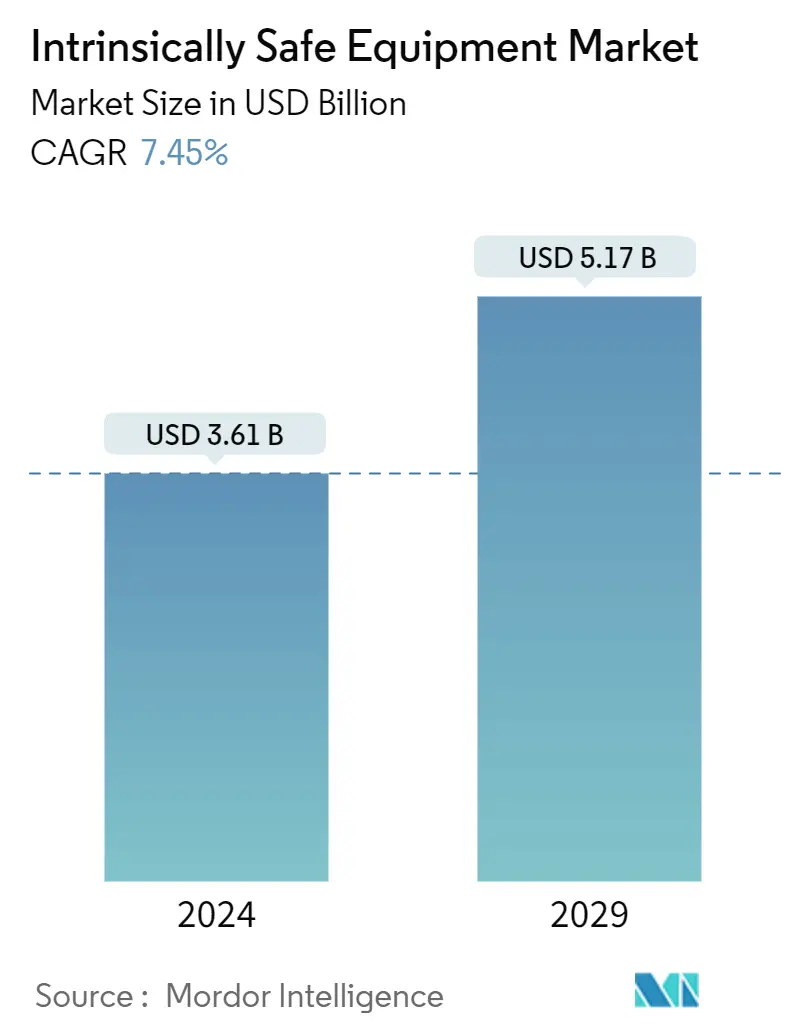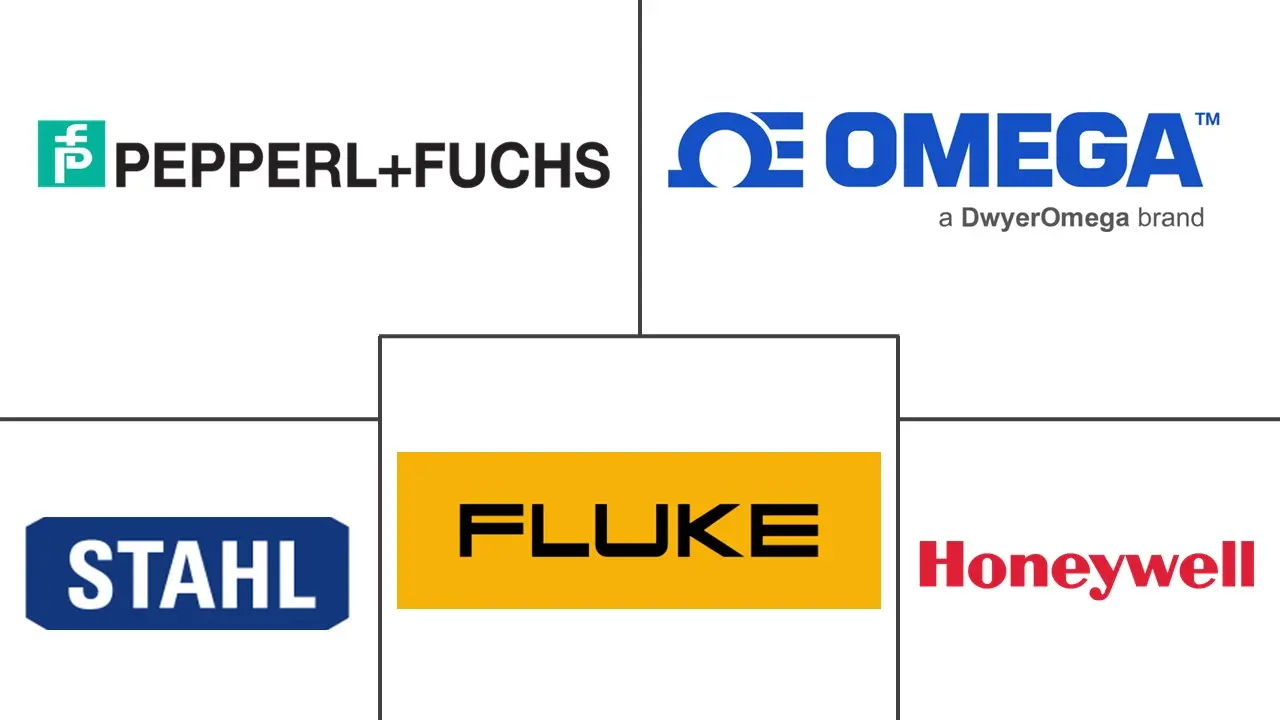Market Size of Intrinsically Safe Equipment Industry

| Study Period | 2019-2029 |
| Market Size (2024) | USD 3.61 Billion |
| Market Size (2029) | USD 5.17 Billion |
| CAGR (2024 - 2029) | 7.45 % |
| Fastest Growing Market | Asia Pacific |
| Largest Market | Asia Pacific |
Major Players
*Disclaimer: Major Players sorted in no particular order |
Need a report that reflects how COVID-19 has impacted this market and its growth?
Intrinsically Safe Equipment Market Analysis
The Intrinsically Safe Equipment Market size is estimated at USD 3.61 billion in 2024, and is expected to reach USD 5.17 billion by 2029, growing at a CAGR of 7.45% during the forecast period (2024-2029).
Intrinsically safe equipment is equipment and wiring that cannot release sufficient electrical or thermal energy under normal or abnormal conditions to cause the ignition of a specific hazardous atmospheric mixture in its most easily ignited concentration. This is achieved by limiting the amount of power available to the electrical equipment in the dangerous area to a level below that which will ignite the gases. Fuel, oxygen, and an ignition source must be present to have a fire or explosion.
An intrinsically safe system assumes that fuel and oxygen are present in the atmosphere. Still, the system is designed in a way that the electrical energy or thermal energy of a particular instrument loop can never be significant enough to cause ignition. Intrinsic safety (IS) is an approach to the design of equipment going into hazardous areas. The idea is to reduce the available energy to a level too low to cause ignition. That means preventing sparks and keeping temperatures down.
- Flourishing industrialization is a significant factor driving the growth of intrinsically safe equipment. With the growing population, the outlook for process manufacturing is generally positive over the next year or so. According to United Nations Industrial Organizations, industrial economies ticked from a limited 2.5% Y-o-Y increase in the second quarter of 2022 to a 3.6% expansion in the third quarter. Other industrializing economies registered a Y-o-Y output increase of 4.9% in the third quarter of 2022, higher than the group of industrial economies.
- The rising oil and gas exploration activities have positively impacted the growth of the market studied, as intrinsically safe equipment is widely used in the oil and gas industry because of the highly explosive atmosphere and flammable gasses. The industry is highly prone to risks, and emergency management systems are crucial. The International Energy Agency forecasts global upstream oil and gas investments to increase by about 11% to USD 528 billion in 2023, the highest level since 2015. The renewed appetite for oil and gas reserves and production – among European majors in particular – comes after Shell and BP slowed down plans to shift away from their legacy business and invest in renewables as part of the energy transition.
- Thus, the demand for intrinsically safe equipment is expected to increase during the forecast period because of the increased safety standards for hazardous areas. The oil and gas segment held over a 30.91% share in the intrinsically safe equipment market in 2022. The oil and gas industry broadly includes areas that are hazardous to the employees and the equipment used. Moreover, the oil and gas industry includes trunk pipelines, pumping and compressor stations, and other facilities requiring modern and reliable control and safety systems.
- Occupational health and safety (OHS) regulations are essential for protecting the health and safety of workers in any industry. However, these regulations can vary significantly from region to region, including North America, Europe, Asia, Australia, and New Zealand. Thus, complying with regulations in different countries can be challenging for companies, especially those that operate across borders. One significant challenge is the cultural differences that may affect how laws are interpreted or implemented.
- Furthermore, multinational companies working in global regions have to work toward customizing their products per the varying country requirements, making their production process more complex and minimizing the rate of economies of scale. On the contrary, some of the joint international standards set by organizations such as the International Electrotechnical Commission reduce the impact of this restraint in the global market.
- The conflict between Russia and Ukraine has dramatically affected the global economy. Countries that rely on importing oil and natural gas have been particularly impacted due to their dependence on energy imports. The ongoing conflict in Ukraine could potentially result in a surge in the demand for oil and gas from African nations, as they possess the necessary reserves and infrastructure to meet this growing need. Various countries, including Japan, EU nations, and others, actively invest in Africa's oil and gas sector to reduce their reliance on Russia. Furthermore, Africans and Europeans have already begun collaborating on oil and gas projects, which are expected to further enhance the market's opportunities.
